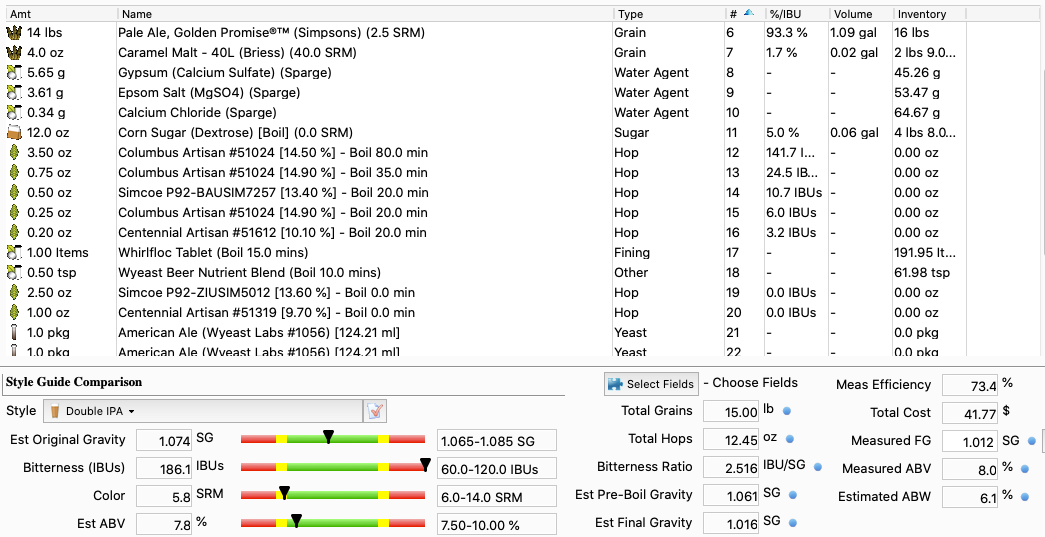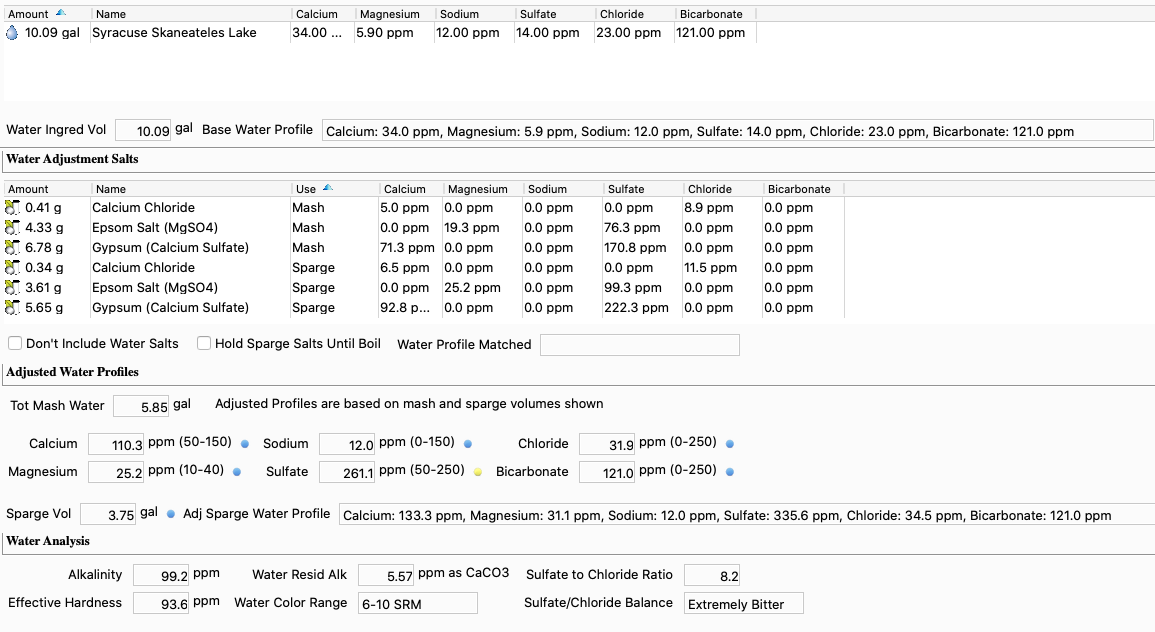I also brew a slight variation on the old Pliny recipe as one of my go-to beers. I get the crazy IBUs in Beersmith (see below) for the reasons that
@Brooothru says.
I think the Vinny home-brew recipe might even be a bit older than the five-year vintage that
@Brooothru suggests. To get a bit closer to the current Pliny, I have dropped the amount of C40 and dropped the carapils. I use Golden Promise as my base malt, which makes for a fine beer. The color is almost spot on, maybe a shade darker than Pliny.
One of the evolutions of Pliny has been to go lighter in color and (I think) dryer in finish, which is why I bumped down the C40 and dropped the carapils. I might try a version that drops the C40 completely and uses 10% pilsner malt for the base and 90% Golden Promise to get it a shade even lighter. Newer recipes (e.g.
Pliny the Elder 4.0 – Bertus Brewery although that's circa 2015) use hop extract. I've never had problems with vegetal flavors and I find cleaning T90s out of my Hop Stopper 2.0 easier than mucking around with extract. Golden Promise is great for this beer. I've probably diverged enough from Pliny at this point that it's not a clone, but it's a damn fine west-coast DIPA.
Don't forget the water! To get this beer to really sing, I need a whopping 8.2:1 sulphate to chloride ratio. I posted a shot of my water profile.
View attachment 745308
View attachment 745309









